The town of Little Bay has recently established a Heritage Society and built a walking trail under their Waking Trail committee. I’d encourage you to pay attention to the goings-on in Little Bay as the historic mining town has a lot to offer local tourism and the community is working toward establishing that role. I was asked to put together some ideas for heritage signs to be included with the walking trail. You’ll find those below. I’d welcome your suggestions and criticisms on my outlines for the signs. And if you’re the one responsible for putting this information on the physical signs themselves feel free to make any changes you see fit. I’ve included images as suggestions but I’ve got plenty more pictures. I’m having some issues with the site so the ones included are aligning oddly. If you end up using them hit me up for the actual image files.
On another note the Little Bay mine property was recently acquired by Kermode Resources so I dropped them a line inquiring about getting permission to dig up the old crusher. If that goes ahead I’ll draw up some signage to accompany it.
Roman Catholic Cemetery
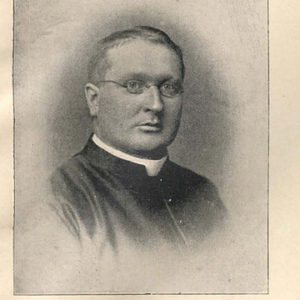 Welcome to Her Lady of Carmel Parish’s Catholic Cemetery. Her Lady of Carmel Parish was built in 1881 under the oversight of Stephen O’Flynn. Father O’Flynn was Little Bay’s priest from 1879 until his death in a carriage accident in 1899. He was 49 years old. Father O’Flynn presided over the services of many of those buried here during the life of that church. Her Lady of Carmel Parish was lost to a fire in 1903 which destroyed much of the Bight.
Welcome to Her Lady of Carmel Parish’s Catholic Cemetery. Her Lady of Carmel Parish was built in 1881 under the oversight of Stephen O’Flynn. Father O’Flynn was Little Bay’s priest from 1879 until his death in a carriage accident in 1899. He was 49 years old. Father O’Flynn presided over the services of many of those buried here during the life of that church. Her Lady of Carmel Parish was lost to a fire in 1903 which destroyed much of the Bight.
This sacred ground serves as the final resting place for members of Little Bay’s Catholic community during the late 19th and early 20th centuries. The oldest grave herein belongs to a young boy named Edward Kidston who died in a house fire in 1881. He was the son of mine manager Archibald Scott Kidston.
As you stroll through the cemetery please take a moment to reflect on the lives and contributions of those who are buried here and to honour their memory. This cemetery is a reminder of the deep roots of the Catholic community in this area and serves as a testament to their enduring legacy.
Church of England Cemetery
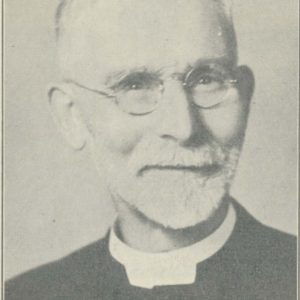
Welcome to the Church of England cemetery of St. Luke’s church. St. Luke’s church was completed in 1885. This historic cemetery is the final resting place for the members of that congregation during the late 19th and early 20th centuries. St. Luke’s was lost to the fire that destroyed much of the community in 1903. Many of the services for those buried here were conducted by Rev. Arthur Pittman. Rev. Pittman was a prominent member of the Church of England in Newfoundland as well as a published author.
The oldest grave herein belongs to Mary Ann Diem. She died in 1888. Mary Ann Diem was the wife of mine manager Jacob Diem. The Diem family were the last of Little Bay’s original German inhabitants to depart the area.
Many of the people buried here played important roles in the history of the local community, and their stories and contributions are forever etched in the stones that mark their graves. This cemetery is a testament to the enduring legacy of the Church of England and serves as a reminder of the rich history and culture of the area. Please respect the peaceful nature of this sacred site and remember to leave it as you found it.
The Baron

Little Bay is a historic copper mining town that was founded by the German Baron Franz von Ellershausen in 1878. The Baron, a visionary entrepreneur, recognized the potential of the rich mineral deposits in the area and set out to establish a mining town that would attract workers from all over the world. He built a network of mines, erected homes for the miners and their families, and established a company town that provided everything the residents needed. The mines quickly became productive and the town grew rapidly.
The first mine shaft in this area, known as the Sirius Shaft, was named for the bright star in the night sky. Over time, it became known as the Seary Shaft. This shaft played a significant role in the development and growth of Little Bay’s mining industry. The Baron’s foresight and hard work laid the foundation for Little Bay’s prosperity and established it as one of the most important mining towns in the region. Visitors can still see the remnants of the mining operations and the company town that the Baron built. We hope you enjoy your visit and take a moment to reflect on the history and the impact of the Baron’s founding of Little Bay.
Loading Wharf
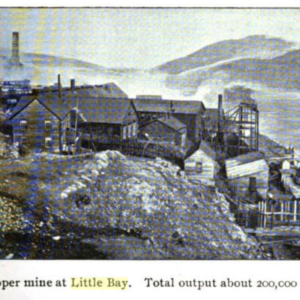 Little Bay’s Loading Wharf was a historic industrial site built by Baron Franz von Ellershausen, the founder of the mining town of Little Bay. This advanced wharfage was quickly completed in 1878 and served as an international port where several steamships could be docked at once. The wharf was a vital component of the mining operations, as it allowed for the efficient loading and transport of the valuable mineral resources extracted from the mines. The wharf was also an important hub for trade and commerce in the region, connecting Little Bay to the rest of the world.
Little Bay’s Loading Wharf was a historic industrial site built by Baron Franz von Ellershausen, the founder of the mining town of Little Bay. This advanced wharfage was quickly completed in 1878 and served as an international port where several steamships could be docked at once. The wharf was a vital component of the mining operations, as it allowed for the efficient loading and transport of the valuable mineral resources extracted from the mines. The wharf was also an important hub for trade and commerce in the region, connecting Little Bay to the rest of the world.
The Loading Wharf was an engineering marvel of its time, designed to withstand the harsh coastal conditions and accommodate the heavy loads of the steamships. The Loading Wharf was equipped with advanced machinery and equipment, which made it possible to load and unload ships quickly and efficiently. The Loading Wharf played a crucial role in the development of Little Bay, by facilitating the export of the mineral resources, and by providing jobs for the local population.
Today, the remnants of the Loading Wharf serve as a reminder of the hard work and ingenuity of the people who built Little Bay and an important part of the region’s industrial heritage. Please enjoy your visit and take a moment to reflect on the history of the Loading Wharf and its contribution to the development of Little Bay and the region.
Shimmy Cove
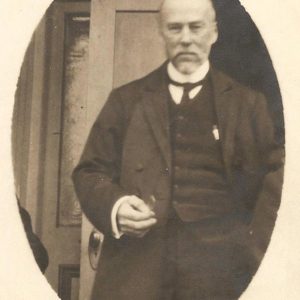 Shimmy Cove was once known as Stafford’s Town. This picturesque cove was named in honour of Dr. Frederick Infield Rex Stafford, Little Bay’s first doctor, who established a chain of drug stores across Newfoundland. Dr. Stafford arrived in Little Bay in 1878 at the request of the Baron and quickly recognized the need for medical services in the growing mining town. He set up a practice and became an important figure in the community, known for his compassion and dedication to his patients.
Shimmy Cove was once known as Stafford’s Town. This picturesque cove was named in honour of Dr. Frederick Infield Rex Stafford, Little Bay’s first doctor, who established a chain of drug stores across Newfoundland. Dr. Stafford arrived in Little Bay in 1878 at the request of the Baron and quickly recognized the need for medical services in the growing mining town. He set up a practice and became an important figure in the community, known for his compassion and dedication to his patients.
Dr. Stafford not only served as the town’s doctor but also as a civic leader and entrepreneur. He established the chain of drug stores which provided the residents of Newfoundland with essential medical supplies, and he also helped establish the first hospital in Little Bay. His contributions to the community were so significant that the cove where he lived was named in his honour. Stafford’s Town was nicked named Chemist Cove which over time became Shimmy Cove.
Shimmy Cove is a picturesque spot that offers visitors beautiful coastal views and a glimpse into the region’s history. Visitors can still see the remnants of the original settlement, and the small community that still exists today. We hope you enjoy your visit and take a moment to reflect on the history of Shimmy Cove and the impact of Dr. Stafford’s contributions to the development of Little Bay and the region.
Cave-in site
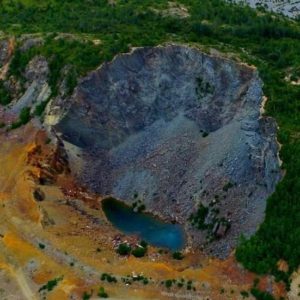 This historic site was once again a bustling hub of activity during the 1960s. The mine was in operation during that time, providing valuable resources to the community. The hardworking miners of Little Bay Mine played a vital role in shaping the local economy and society. This site serves as a testament to their dedication and contributions. We honour the memories of those who worked and those who were impacted by the mine’s operation. Please take a moment to reflect on the rich history of this site and the people who helped build it.
This historic site was once again a bustling hub of activity during the 1960s. The mine was in operation during that time, providing valuable resources to the community. The hardworking miners of Little Bay Mine played a vital role in shaping the local economy and society. This site serves as a testament to their dedication and contributions. We honour the memories of those who worked and those who were impacted by the mine’s operation. Please take a moment to reflect on the rich history of this site and the people who helped build it.
On this spot in 1968, the main pillar of the mine collapsed, causing a cave-in. Thankfully, no lives were lost in this incident. This site serves as a reminder of the potential dangers in the mining industry and the importance of safety precautions. Please respect the area and any posted warnings.
